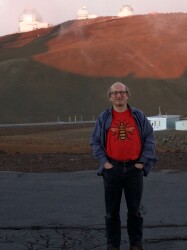BibTex format
@article{Gruppioni:2017:10.1017/pasa.2017.49,
author = {Gruppioni, C and Ciesla, L and Hatziminaoglou, E and Pozzi, F and Rodighiero, G and Santini, P and Armus, L and Baes, M and Braine, J and Charmandaris, V and Clements, DL and Christopher, N and Dannerbauer, H and Efstathiou, A and Egami, E and Fernandez-Ontiveros, JA and Fontanot, F and Franceschini, A and Gonzalez-Alfonso, E and Griffin, M and Kaneda, H and Marchetti, L and Monaco, P and Nakagawa, T and Onaka, T and Papadopoulos, A and Pearson, C and Perez-Fournon, I and Perez-Gonzalez, P and Roelfsema, P and Scott, D and Serjeant, S and Spinoglio, L and Vaccari, M and van, der Tak F and Vignali, C and Wang, L and Wada, T},
doi = {10.1017/pasa.2017.49},
journal = {PUBLICATIONS OF THE ASTRONOMICAL SOCIETY OF AUSTRALIA},
title = {Tracing the Evolution of Dust Obscured Star Formation and Accretion Back to the Reionisation Epoch with SPICA},
url = {http://dx.doi.org/10.1017/pasa.2017.49},
volume = {34},
year = {2017}
}

